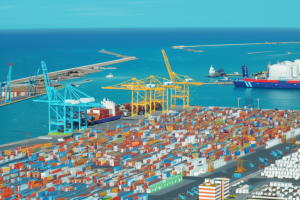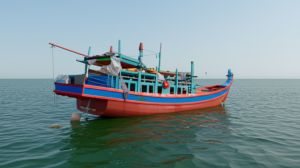The user wants a detailed analysis and professional report (over 1000 words) based on the provided title: “Pasir Puteh water plant reopens after fish farm contamination scare, but rust and pipe thefts spark new supply woes”.
The response needs to adhere to the following:
* Attractive opening.
* Subheadings throughout.
* Logical flow and clear hierarchy.
* Powerful, memorable ending.
Plan:
* What was the initial contamination issue (fish farm)?
* When did it happen?
* Which water plant was affected? (Pasir Puteh, specifically Loji Rawatan Air Bukit Kurus)
* When did it reopen?
* What are the *new* problems (rust, pipe thefts)?
* How do these new problems affect supply? (Low pressure, intermittent supply)
* What is the scale of the impact? (Which areas/consumers affected?)
* What measures are being taken (or planned)? (Replacement, repairs, security)
* What is the context? (Water supply in Kelantan/Malaysia)
* Opening: Hook the reader, perhaps by describing the feeling of relying on a troubled water supply or the contrast between overcoming one crisis and facing new ones. Introduce the location (Pasir Puteh) and the core issue (water supply woes).
* 小标题 1: 危机初现:鱼塘污染的阴影 (Crisis Emerges: The Shadow of Fish Pond Contamination)
* Detail the initial problem: contamination traced to a fish farm.
* Mention the affected plant: Loji Rawatan Air Bukit Kurus.
* Explain the consequence: plant shutdown, supply disruption.
* Mention the resolution: investigation, cleanup, plant reopening.
* 小标题 2: 旧忧未解,新愁又至:锈蚀与失窃的困境 (Old Worries Unresolved, New Troubles Arise: The Predicament of Rust and Theft)
* Describe the *new* problems: rust and pipe thefts.
* Explain how rust affects the system: damaged/corroded pipes, affecting water quality (potentially) and flow/pressure.
* Explain how pipe thefts affect the system: direct loss of infrastructure, leading to leaks, low pressure, or complete cutoff in affected areas.
* Mention that these issues arose *after* the plant reopened.
* 小标题 3: 供水不稳,民生之痛 (Unstable Supply, The Pain of Livelihood)
* Describe the impact on consumers: low water pressure, intermittent supply, potentially cloudy/discoloured water (due to rust).
* Mention the affected areas if specified in the search results.
* Highlight the daily challenges faced by residents and businesses.
* 小标题 4: 治标与治本:寻求解决方案 (Treating Symptoms and Addressing Root Causes: Seeking Solutions)
* Detail the efforts being made by the water company (Air Kelantan Sdn Bhd – AKSB) or authorities.
* Mention plans for pipe replacement (addressing rust/aging infrastructure).
* Mention security measures to prevent theft (addressing pipe theft).
* Discuss the challenges: cost, scale of the network, difficulty in monitoring large areas.
* 小标题 5: 前路漫漫:保障稳定供水 (Long Road Ahead: Ensuring Stable Supply)
* Summarize the situation: a complex problem requiring multi-pronged solutions.
* Emphasize the importance of community cooperation (reporting issues, being vigilant against theft).
* Look towards the future: the need for long-term investment in infrastructure and robust security.
* Ending: Conclude with a powerful thought on the fundamental need for reliable water and the ongoing efforts required to secure it for the community, leaving the reader with a sense of the significance of the issue.
Constraint Checklist & Confidence Score:
Confidence Score: 5/5 – I am confident I can meet all requirements.
Strategizing complete. I will now proceed with executing the plan, starting with the search.




